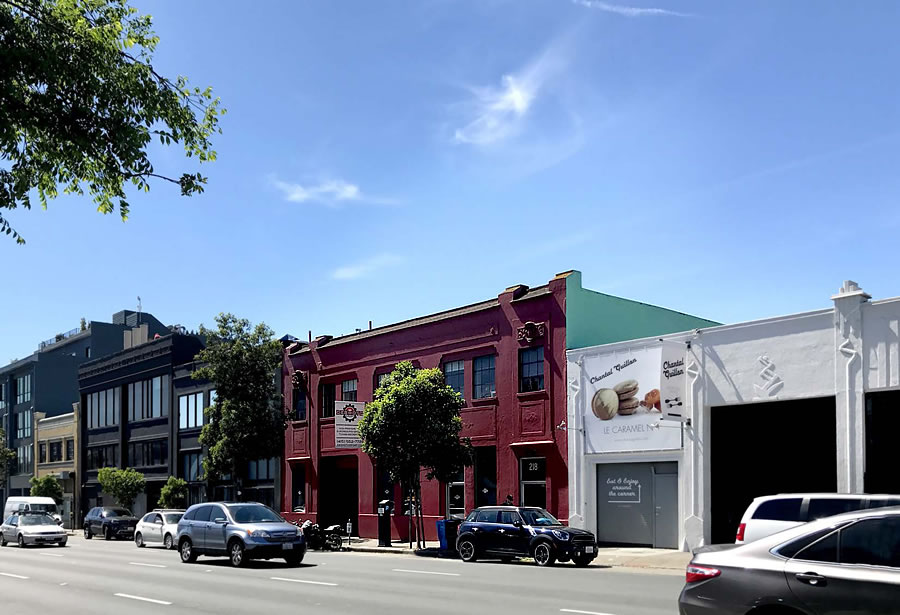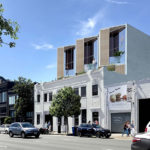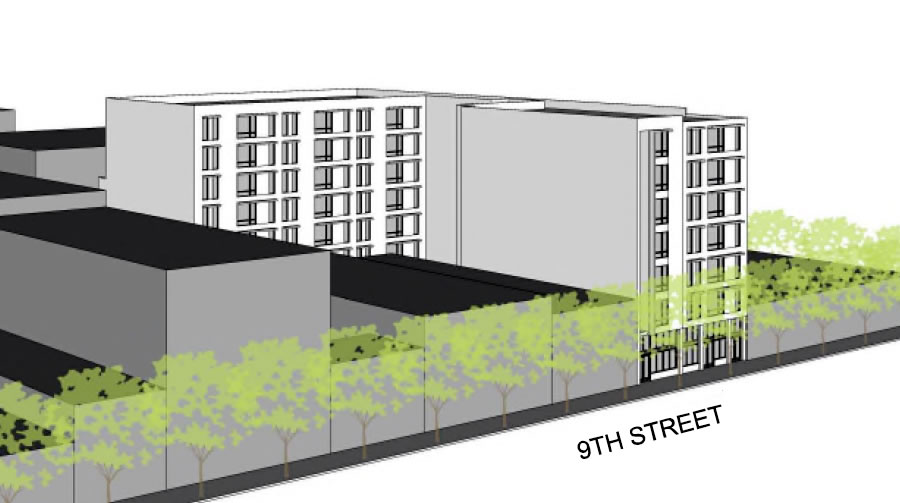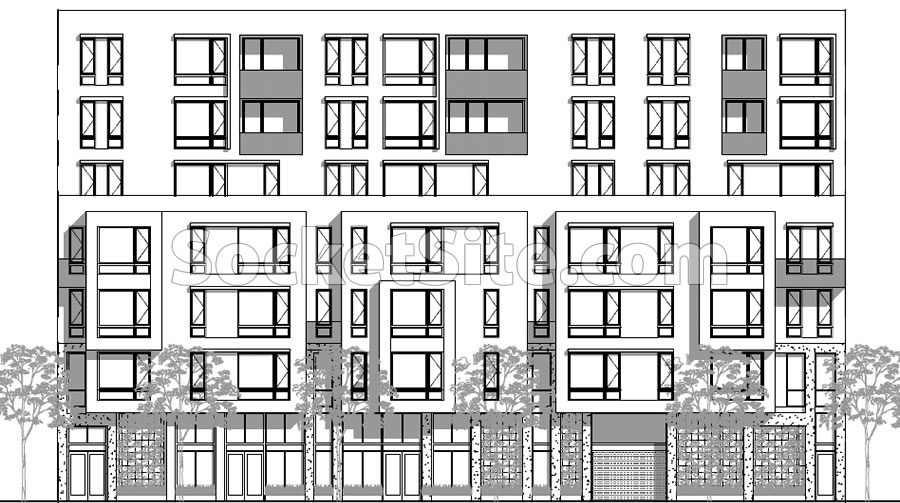As we first reported eight months ago:
“The two-story concrete building at 220 9th Street, which is home to Desmoto Sport, Hop.in and a number of other businesses in the portion of the building which fronts Dore Street (such as Guitronics amplifier repair) was built in 1924 for the Wells Manufacturing Company.
While the 220 9th Street parcel is zoned for development up to 55 feet in height, the existing building has been identified as a historic resource for San Francisco’s Western SoMa Light Industrial and Residential Historic District. And as such, the building’s façade will likely need to be preserved.
But that doesn’t mean the 16,000-square-foot parcel can’t be developed and densified.
And with the building now on the market with a $9.9 million price tag, ISO Ideas was engaged to draft a couple of conceptual plans for how the parcel could be developed.
As envisioned by Ideas and rendered with both a classical and more modern approach, the parcel could yield up to 52 residential units over 10,000 square feet of commercial space and parking for 25 cars.
And the bulk of the five-story development would front Dore.”
Having traded hands to the LMT Home Corporation at the beginning of this year, and with Desmoto having since moved, all-new plans for the 220 9th Street site have been drawn by Levy Design Partners.
And as now proposed, the existing building on the site would be razed and a contemporary, versus modern, 74-unit building would rise up to 75 feet in height across the L-shaped parcel, leveraging California’s Density Bonus Law for the additional two stories of height and a ground floor garage for 23 cars with its entrance on Dore.
We’ll keep you posted and plugged-in.





Why not both preserve the facade and go for the bonus height? They are not mutually exclusive.
Agree. Can’t be that difficult for this small facade.
My guess: money; as interest rates rise, and people get antsy about the future of condos in SF (pace and price of sales) things get harder and harder to pencil out and the “little things” – like facade preservation – are among the first to go.
Or maybe the new developers are just jerks.
Preserving the existing facade would cost more and require a setback as originally rendered above, resulting in a reduction in the saleable square footage and the return on investment.
While I understand the developer’s desire to improve their bottom line, it seems like historic preservation requirements are being applied capriciously. Some projects must spend more to preserve the facade, other projects get a pass.
A setback is only “required” b/c it was designed that way: I can’t imagine there’s any engineering reason why the facade couldn’t be used for the ground floors, and the floors above set flush w/ the street (some might even argue this type of preservation preferable in case like this – a simple, largely rectangular frontage)
I assumed that “setback required” was not for engineering reasons but so the historic facade stands out on its own without a sudden transition to the modern upper floors. the original design with the setback loses floorspace for the upper floors. But it does create nice rooftop patios for the third floor.
That’s a bingo!
Which is an unfortunate requirement! In downtown DC when I visited I saw several historic facades preserved with no setback. It looks fine and enables homes for more people to be built.
I am skeptical of the historic value of these rather samey-looking warehouses (which were built to be cheap and utilitarian, not aesthetic), but that’s a separate conversation.
What’s “incorrect”, that it IS required for engineering reasons or that I erred in using the word “only”? If the latter, then I amend my remark to “…b/c the guidelines foolishly required it be designed that way”. And are there no variances? “(S)tanding out” makes sense when the existing building is remarkable, or some intricate/gabled design that can’t readily serve as a base…but neither is true here, and the result is the requirement becomes just another excuse for demo.
That’s incorrect.
Desmoto moved out end of January, now over by Bottom of the Hill in the old independent Ferrari shop building (who moved across the street).
Too bad ISO isn’t still working on this.
My God! If this facade qualifies for “preservation” then so should the facade of All Star Donuts at Market & Van Ness.
Thank goodness All Star is in Supervisor Breed’s district or I would be worried about you giving Kim ideas.
And the new proposal is…pretty much just like the rest of them, stewn across SOMA. Oh well, units is units.
The old facade is relatively handsome, if not really special. One consideration I haven’t heard much about is the prospect that an old facade and some version of a preserved interior might be more desirable to a commercial tenant compared with the generic second version. Think Sight Glass on 7th.
It is too bad; the original design was creative and sharp looking and preserved the handsome historic facades.
how is that historic? it deserves knocking down if if there wasnt a new building.
So the law requires us to preserve a bland unremarkable building…..in order to build a new bland unremarkable building.